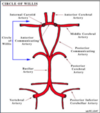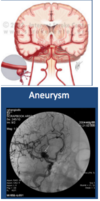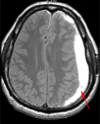Neuro Flashcards
(149 cards)
dementia
what are 5 key features you may find?
1, memory loss
- speech and language difficulties
- problem solving difficulties
- impaired judgement
- may have mood issues
dementia
mood issues include? 5
depression
agitation
delusions
insomnia
disinhibition
what are 3 neurological features that might help explain the neuro changes seen in dementia?
- changes in cerebral circuits
- nerve loss
- changes in neurotrasmitters
what is the most common form of dementia?!
alzheimers
what are the 8 causes of the different types of dementia?
- alzheimers
- vascular dementia
- multi-infarct dementia
- frontotemporal dementias (huntingtons)
5 parkinsons dementia
- dementia with lewy bodies
- ETOH/drugs
- viral (creutzfeld-jakob)
what are the two most common forms of dementia?
1- parkinsons dementia-50%
alzheimers dementia
what to keep in mind about htis?
what causes this? 2
do they know they have it?
most common dementia
memmory loss can start as very subtle
progressive over years
NEURITIC PLAQUES (senile plaques)** and **amyloid deposition in arterial walls of neurons making neurofibillary tangles “neurons get all tangled up so they don’t work as well”
don’t recognize that they have it
behavior changes, may get lost
who is there a higher incidence of alzheimers dementia in?
down syndrome pts
alzheimers dementia
8 presentations
- word finding issues/speech difficulties
- wandering/getting lost
- poor judgement
- delusions
- agression
- sleep disturbance
- incontinence
- bedriddent status
alzheimers disease
why is it difficult to dx?
you can only confirm on autopsy with brain bx
what are the 3 most important risk factors for alzheimers dementia?
- OLD AGE—–most important RF
- family hx
- female gender
how do you confirm alzheimer on autopsy?
apolipoprotein 4 on autopsy
vascular dementias

what to remember about this?
who do you find this in?
what are the type?
SECOND MOST COMMON DEMENTIA
multi-infarct dementia in classically HTN pts
small or large infarcts known as lucunar** **and multiple cortical infarctions
**more sudden onset**
frontotemporal dementia
what is this caused by?
4 early sxs? what comes later?
what are 3 diseases that cause this?
caused by degeneration of the frontal (behavior) and temporal lobe
early features include:
- attention issues
- judgement impairment
- awareness
- behavior issues
***memory loss seen in later disease***
- huntingtons chorea
- picks disease
- progressive supranuclear palsy
huntington’s chorea
inheritance pattern?
where is defecT?
autosomal dominant-50% chance for kids
chromosome 4
frontotemporal dementia:
picks disease
what does this result in?
what do you see on testing?
tx?
anterior frontal and temporal cerebral cortex with MARKED personality changes
***intracellular inclusion (pick bodies) stain with silver stain
Tx:
NONE
tx behavior
what are the lewy bodies that are seen in dementia?

intaneuronal cytoplasmic includsions that stain with PAS staining
demenia:
progressive supranuclear palsy
what are 4 things this is qualifed by?
how long does the person have to live?
tx?
- falls
- gaze paralysis cant look down
- rigidity
- dementia
death within 5-10 years, no tx
dementia:
normal pressure hydrocephalus
what are 3 sxs?
2 dx methods?
1 tx?
- gate ataxia
- dementia
- urinary incontinence
**think falling adult who is incontinent**
DX:
- LARGE VENTIRICLES ON IMAGING/CT
- sume use MRI or CSF tap
tx: shunting
dementia:
korsakoff syndrome
what is this?
can’t recall recent memory despite immediate memory retention
easily confusable
what is a vitamin deficiency that can cause dementia?
B12…macrocytic anemia…causes spinal cord issues “myelepathy”
REPLACE IT
dementia
5 workup you want to do
- history
- mini mental exam
- full neuropsychiatric testing
- B12, thyroid function
- consider CT/MRI to turn our tumor/infarction
dementia
3 tx options for the actual dementia itself
- anti-acetylcholinesterase
**increase ach by inhibiting cholinesterase**
effects last about a year
- donepexil (aricept)
- galantamine
- riovastgmine
- NMDA receptor antagonists
**blocks this over-excitatory neurotransmitter**
used for mod to severe disease WITH ANTI-CHOLINESTERASE DRUGS
- Memantine (namenda)
- COMBO MEMANTINE PLUS DONEPEZIL for alzheimer dementia “Namzaric”
***all can be used in AD or parkinson’s dementia***
what are the goals of txing dementia with medication?
- delay progression of the disease
- improve caregiver disease
- decrease agitation
**can be used in AD and parkinsons…outcomes not as good in other dementia forms**






































